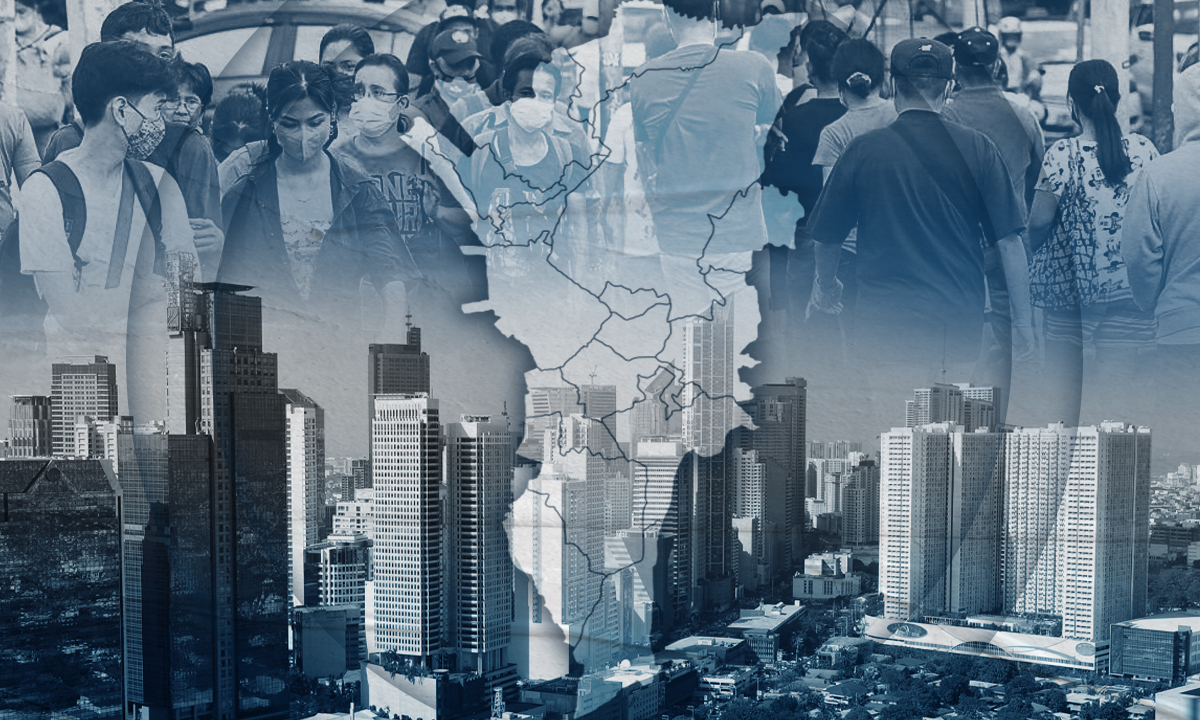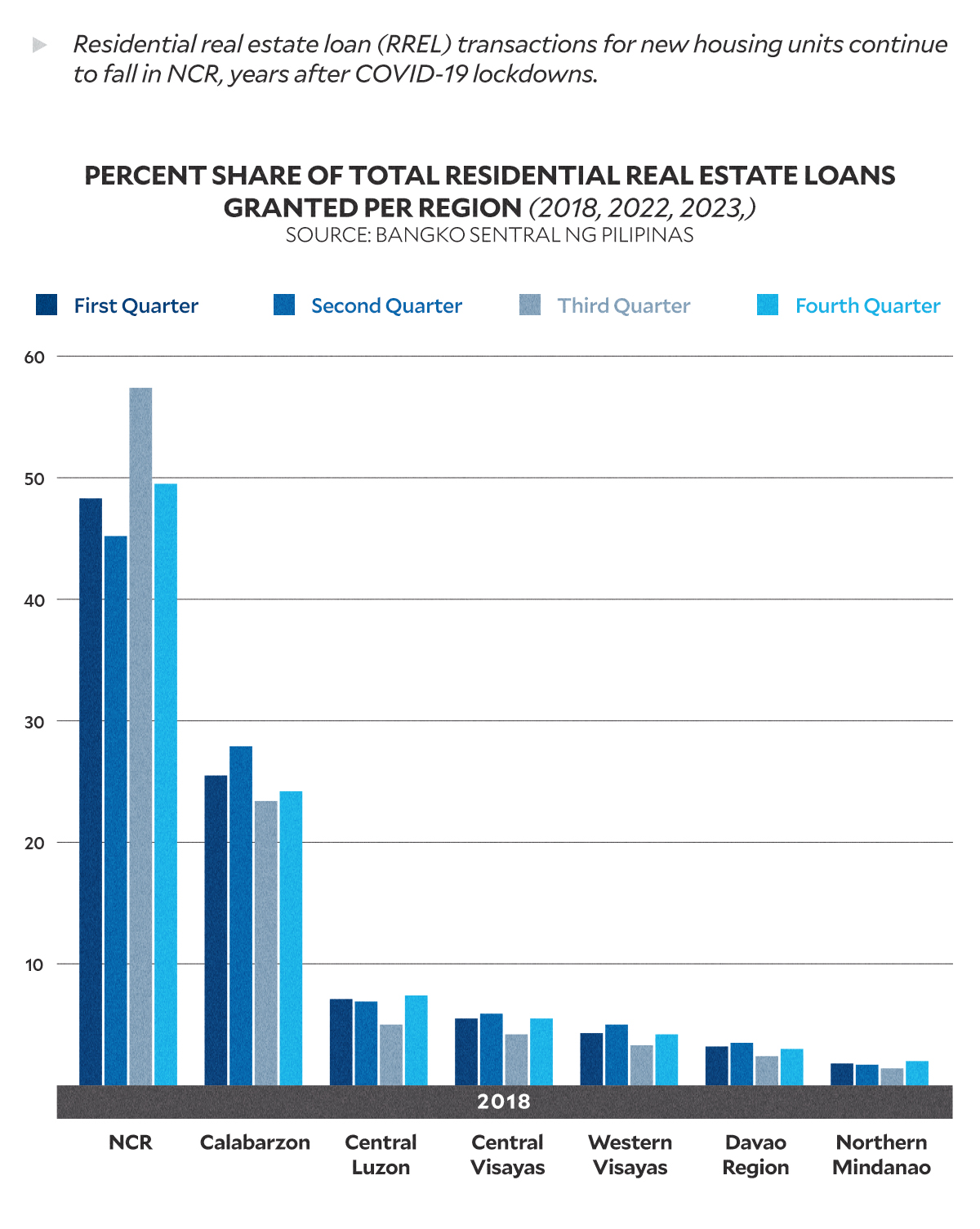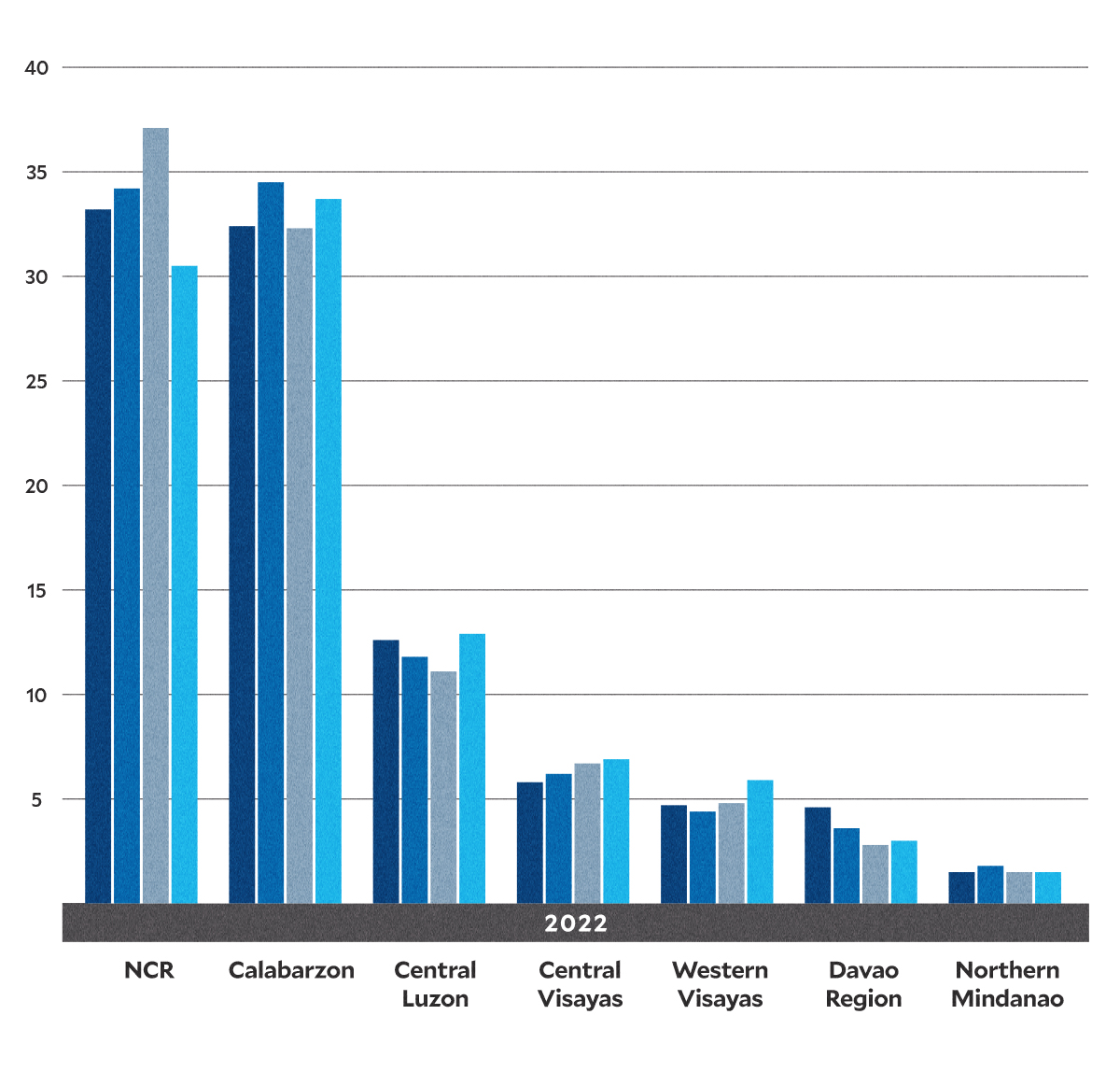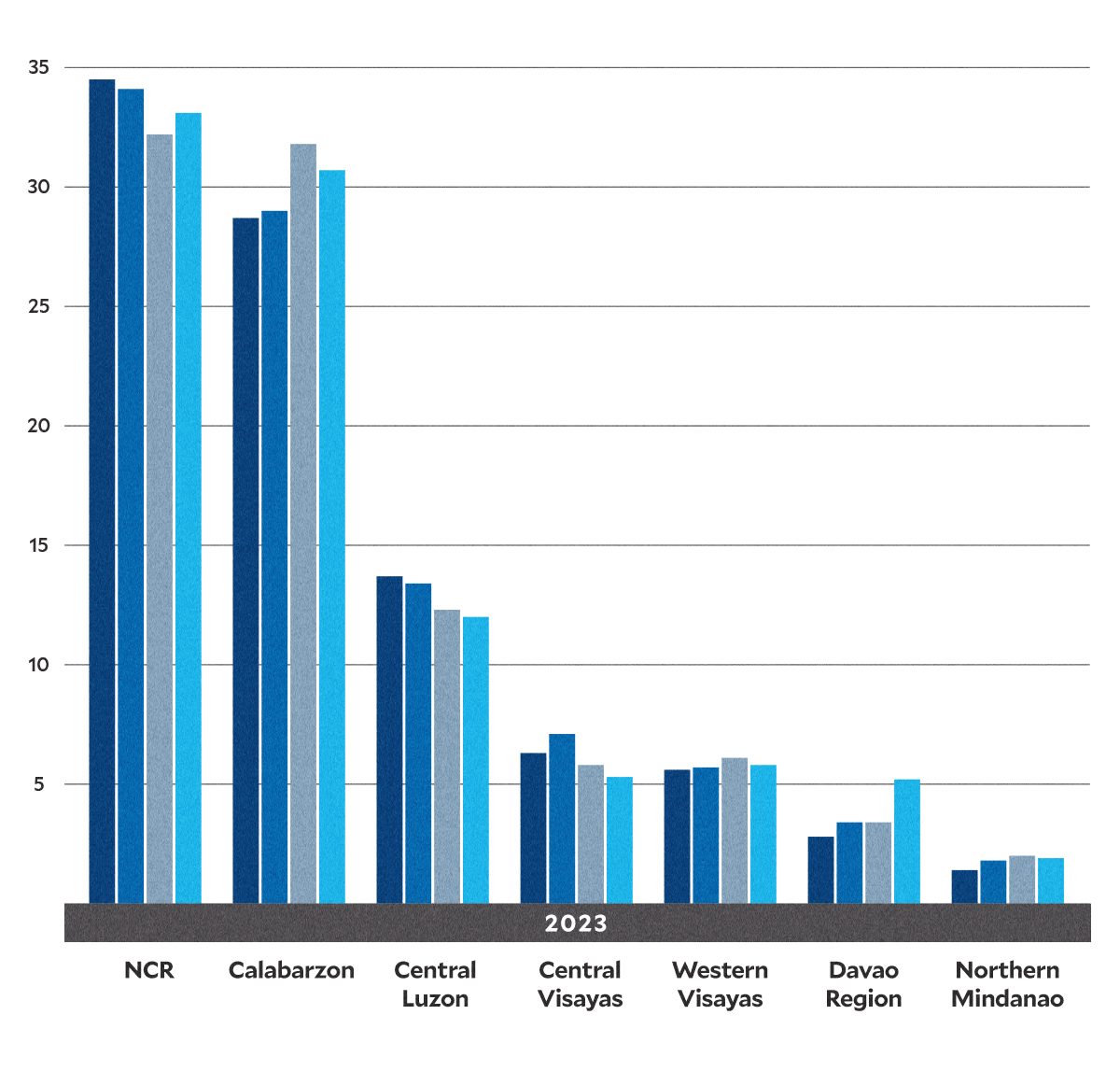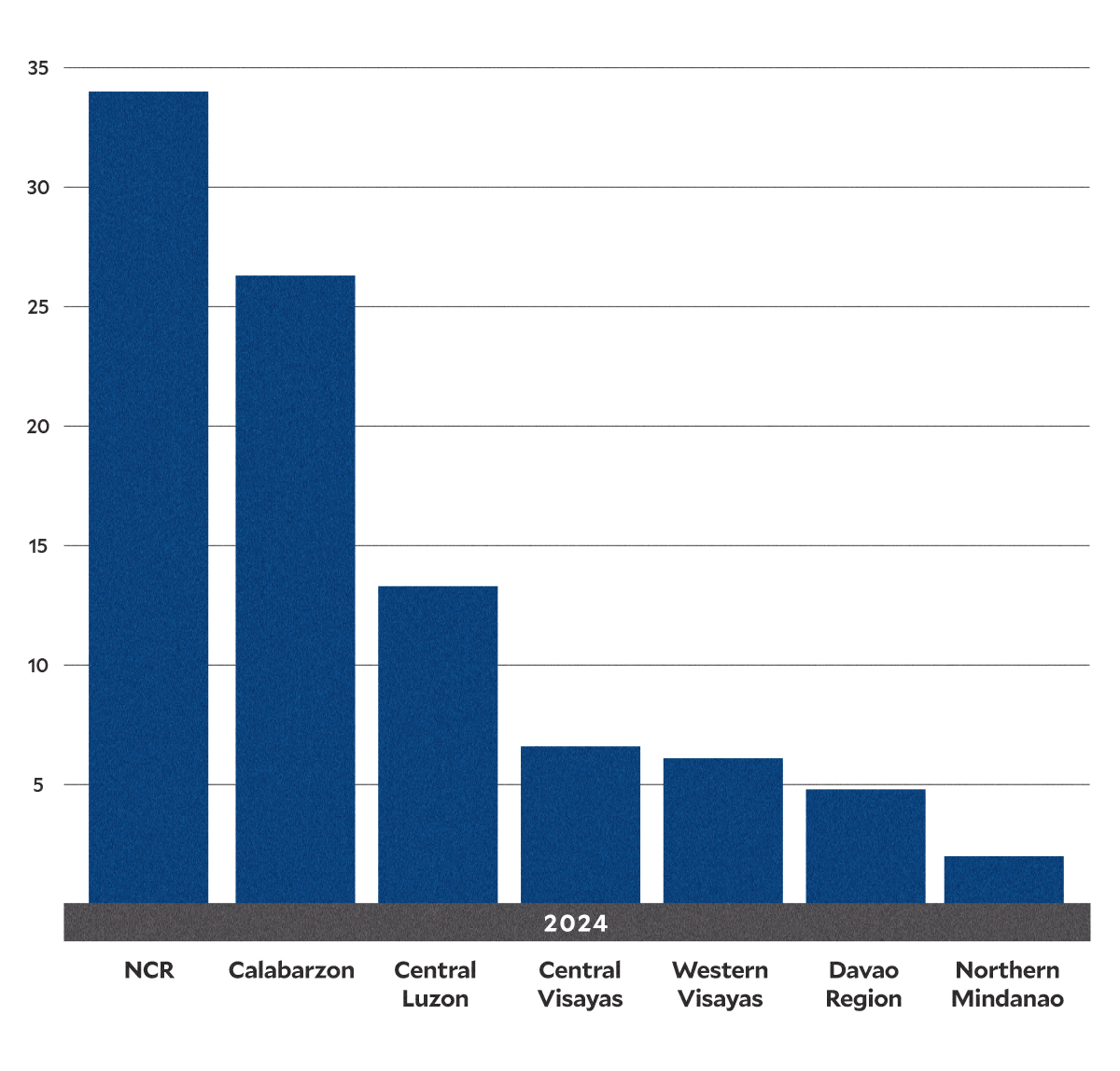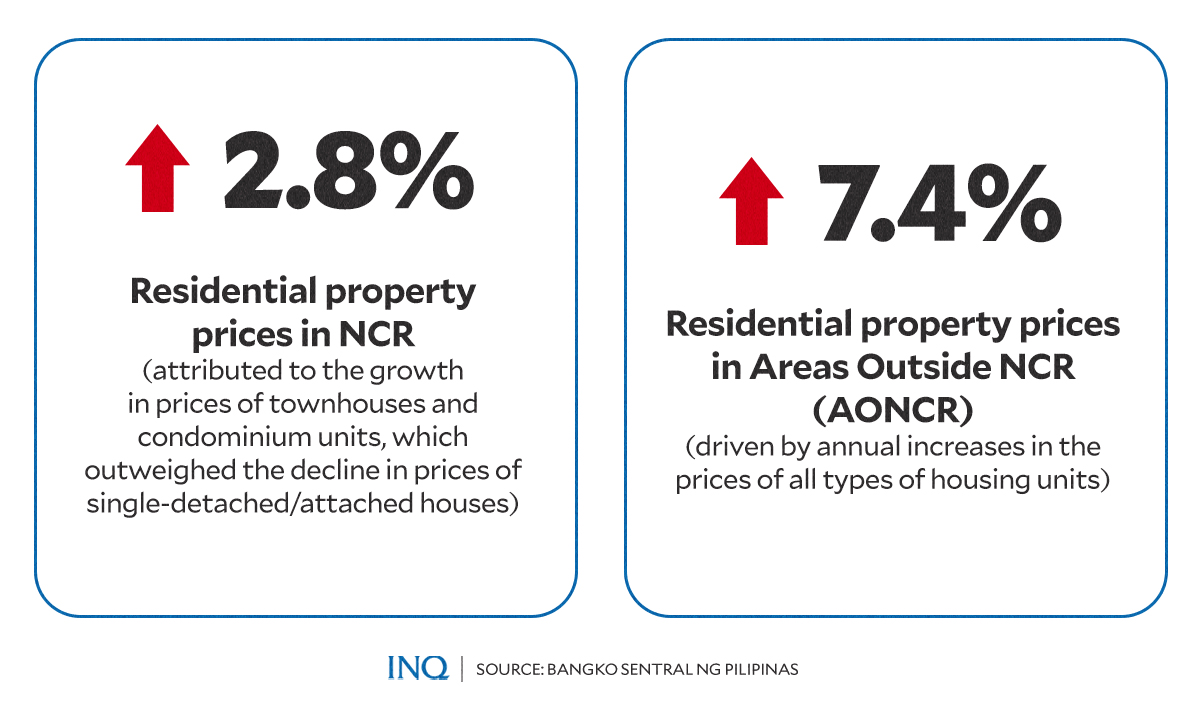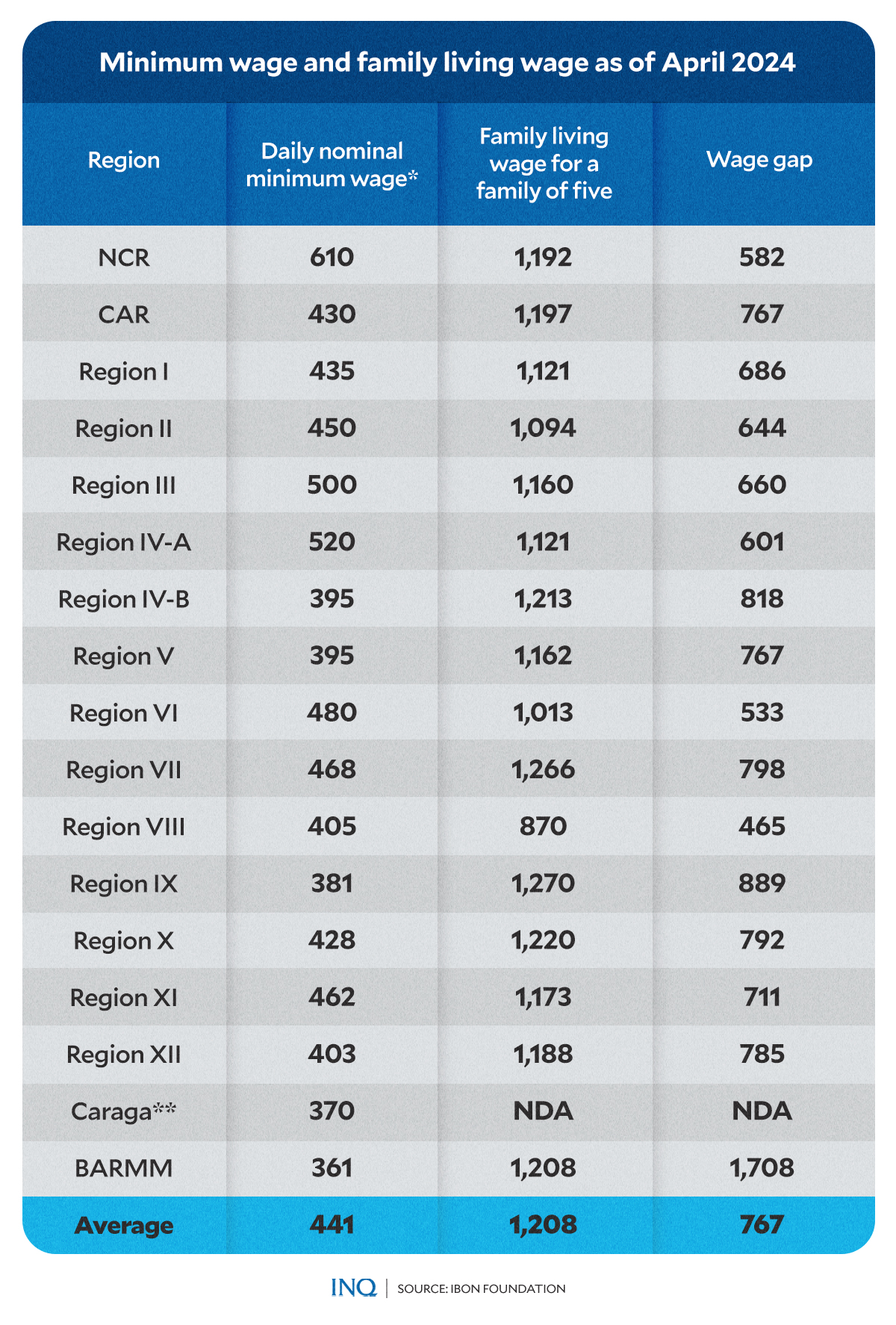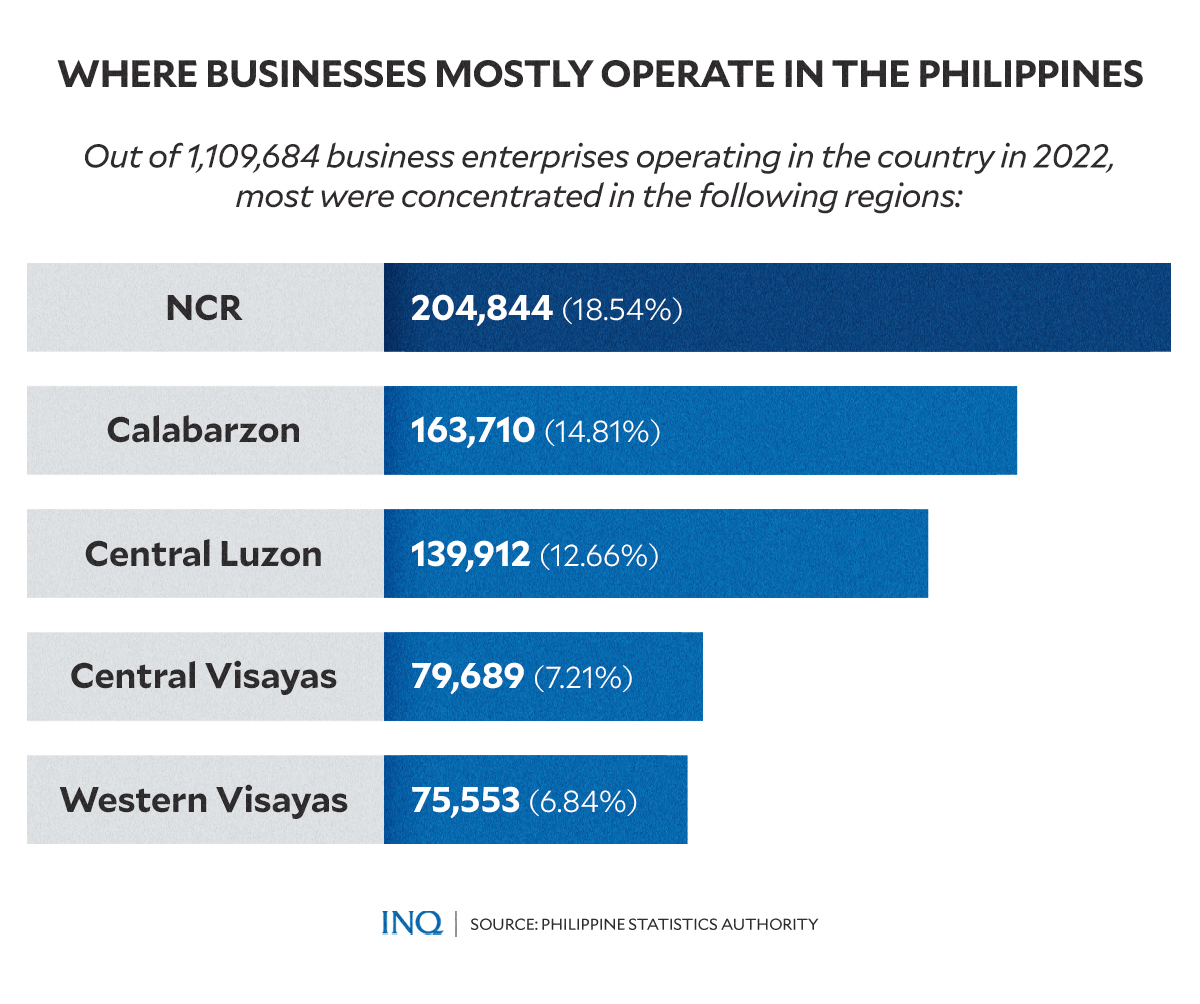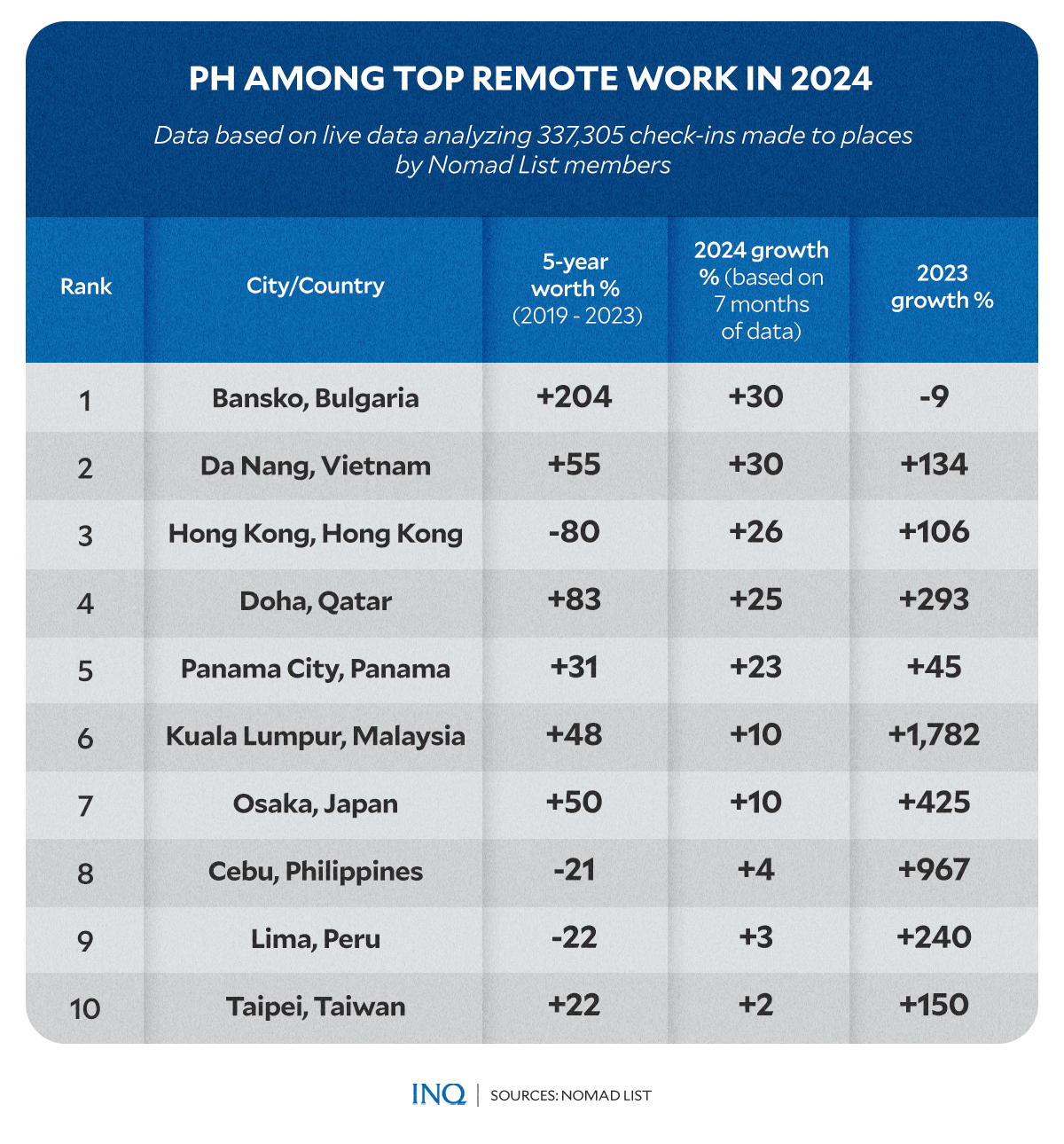MANILA, Philippines—When COVID-19 landed in the Philippines, nationwide lockdowns prompted many people in the National Capital Region (NCR) to return to their provinces or places of origin outside the capital.
Years into the new normal, even with restrictions lifted, people continued to leave the NCR for other regions.
For decades before the COVID-19 pandemic, Filipinos from impoverished rural regions migrated to densely populated cities, particularly the capital, in search of better-paying jobs and housing for a brighter future.
Results from the 2018 National Migration Survey (2018 NMS)-which was conducted by the Philippine Statistics Authority (PSA) and the University of the Philippines Population Institute (UPPI)-identified NCR as the top migration destination region.
The survey, which interviewed over 45,000 individual respondents 15 years old and over, found that NCR was also the most popular regional destination for first-time migrants.
According to a research brief published by the UPPI, this pattern of internal migration, or the movement of people within various regions in the country, is commonly driven by economic reasons.
“Forty-six percent of Filipinos who moved from one city or municipality within the country did so in search of employment,” the study said.
“In addition, housing-related [reasons] (e.g., rental issues, bought a house) [were] the second most common reason cited by respondents,” UPPI said.
“Other reasons for moving are related to life events such as education or marriage,” it said, citing the 2018 NMS.
In 2020, the government, led by then-President Rodrigo Duterte, launched the “Balik Probinsya, Bagong Pag-asa” program to decongest Metro Manila during the pandemic by encouraging people, including stranded workers, to return to their home provinces.
However, even without the program, many workers affected by the pandemic’s impact on NCR businesses had already moved back to their families outside the capital region.
Years later, new data show a continuous demand for housing in areas outside the NCR, with experts noting that these regions are thriving and keeping the property market active despite a slowdown in the capital.
Gap in loans in NCR, AONCR
The latest data from the Bangko Sentral ng Pilipinas (BSP) revealed a rise in residential real estate loans (RRELs) over the past year. However, the data also highlight a growing disparity between the number of loans granted in the NCR and those in areas outside NCR (AONCR) since the pandemic began.
RRELs refer to loans provided by banks and financial institutions specifically for the purpose of purchasing residential units. These loans are typically used to buy houses, condominiums, townhouses, and other real estate property.
From a peak of 57.4 percent in 2018, NCR’s share of total RRELs fell to 30.5 percent by the fourth quarter of 2022, nearly three years into the COVID-19 pandemic. This decline continued into 2023, with NCR’s share dropping further to 28.7 percent in the first quarter.
By the second quarter of 2022, NCR no longer held the highest percentage of granted RRELs in the country. Calabarzon (Cavite, Laguna, Rizal, and Quezon) surpassed NCR with a 34.5 percent share compared to NCR’s 34.2 percent. Calabarzon’s share of approved loans continued to rise since then.
Calabarzon’s share reached as high as 34.5 percent in the first quarter of 2023.
Other regions outside NCR, such as Central Luzon and Central Visayas, have also seen increases in their share of nationwide granted RRELs since 2018.
In the first quarter of 2023, Central Luzon accounted for 13.7 percent and Central Visayas for 6.3 percent of total approved RRELs.
The 2018 NMS revealed that while NCR and Calabarzon were among the top regions for out-migration, they also ranked high in in-migration, along with Eastern Visayas, Bicol, and Davao.
According to Leechiu Property Consultants, a private real estate brokerage firm, the trend of migration to Calabarzon and other areas outside NCR has likely continued and grown following the pandemic.
“There is a widening gap between the number of loans granted in NCR and in areas outside NCR, which started during the pandemic,” the private realty firm said.
“In 2023, 66 percent of RRELs were granted for new housing units in areas outside NCR, [indicating] that demand is continuing to move outside Metro Manila,” it said.
More land, cheaper property
Figures for the first quarter of 2024 show that Calabarzon continued to hold the largest share of granted RRELs in the country at 34 percent, followed by NCR at 26.3 percent. Central Luzon’s share also increased to 13.3 percent.
BSP reported that most of the RRELs granted in the NCR were for purchasing condominium units, while RRELs granted in areas outside the NCR were for purchasing single-detached or attached houses.
Leechiu noted that the limited availability and high prices of vacant land in the capital have propelled the rise of infrastructure and residential projects outside of the capital.
Additionally, the lower land costs in these regions have facilitated the development of low-density horizontal projects, such as houses and townhouses, as opposed to the high-density high-rise condominium projects in Metro Manila that are designed to maximize space.
The private real estate company also explained that developers benefit from low-density projects outside NCR as they offer more flexibility in fund allocation, avoiding the need for high-capital investments in tower projects
“Projects outside Metro Manila tend to be more affordable for buyers and have more spacious residential units within township developments that offer the convenience of living in a larger city,” Leechiu said.
“Infrastructure developments enable these townships more connectivity with major cities and other township projects,” it added.
For Architect Vittoria Aliston, the experience of relocating from Metro Manila to a province provided significantly more value for money, offering a wider range of more affordable housing options.
“If you plan to rent, there are also more varied types of housing you can choose from, with much lower rates compared to Manila,” said Aliston.
“Whether you want a beach house, farmhouse, or even a resort cottage, you have a variety of housing options to choose from in the province,” the architect said.
More opportunities
Before the pandemic, people from various regions across the country moved to cities in the capital, seeking better job opportunities and higher wages.
What factors are now encouraging those who relocated outside NCR to stay and not return to the capital?
Aboitiz InfraCapital previously observed that a primary reason for Filipinos migrating from NCR to the countryside could be the increase in high-quality job opportunities in those areas.
“Coupled with lower living costs, the ready availability of high-paying jobs outside of Metro Manila and Ceby has already attracted thousands of urban migrants back to their hometowns,” said the infrastructure company.
“The influx of talented working-age individuals, investors, and entrepreneurs to the provinces [have], in turn, spurred local economic activity, further slowing down rural flight and attracting even more urban migrants to return,” it added.
Real estate brokerage and consultancy firm KMC Savills said last year that more business process outsourcing (BPO) companies are eyeing provinces to build their offices next instead of locating in Metro Manila.
In April, US-based business process outsourcing (BPO) company Afni announced plans to expand beyond Metro Manila. The company revealed it is exploring new locations in other regions, including Laguna in Calabarzon, where it recently opened its third site.
In 2022, data from the Philippine Statistics Authority (PSA) revealed that aside from NCR, which had 204,844 business establishments (18.54 percent of the country’s total 1,109,684 business enterprises), the following regions also accounted for a significant portion of the nation’s MSME establishments:
- Calabarzon: 163,710 business establishments (14.81 percent)
- Central Luzon: 139,912 business establishments (12.66 percent)
- Central Visayas: 79,689 business establishments (7.21 percent)
- Western Visayas: 75,553 business establishments (6.84 percent)
“Collectively, these MSMEs generated a total of 5,607,748 jobs or 65.10% of the country’s total employment,” the Department of Trade and Industry (DTI) said.
“In terms of regional distribution, the majority of jobs are generated by MSMEs in the National Capital Region (NCR) with 1,426,870 jobs,” it said.
It added that, in terms of MSME numbers, NCR was followed by:
- Calabarzon (815,616)
- Central Luzon (638,470)
- Central Visayas (443,031)
- Western Visayas (353,126)
Embracing the ‘WFH’ setting
Aboitiz InfraCapital also pointed out that the expansion of digital infrastructure in rural areas is another reason more people are moving out of NCR or settling in their hometowns outside the capital.
This development has enabled more people, including migrant knowledge workers, to perform their jobs from the comfort of their homes without needing to return to or leave for NCR.
“With more businesses than ever before turning to work-from-home arrangements to limit health risks and reduce office-related overheads, moving back home has become more popular with this class of urban migrants,” said Aboitiz InfraCapital.
“In addition, the expansion of rural digital infrastructure has led to the proliferation of digital nomads with urban roots that enjoy the more laid-back lifestyles associated with the Philippine countryside,” it added.
A 2023 study by SEEK’s JobStreet and JobsDB, the Boston Consulting Group, and The Network revealed that Filipinos are less inclined to return to the office compared to the global average.
The survey showed that 28 percent of Filipinos prefer to work fully remotely, whereas only 11 percent of respondents from other countries shared this preference.
READ: Most PH job seekers now prefer hybrid, remote work setup
However, the majority of Filipino respondents-46 percent- expressed openness to a hybrid work model, where they split their working days between the office and home. Only 26 percent of Filipinos indicated a preference for a fully on-site work model.
A recent survey by the work and travel platform Nomad List, meanwhile, ranked Cebu as the eighth fastest-growing remote work hub this year, joining five other Asian cities in the top 10.
The ranking was based on growth rates of check-ins made by tens of thousands of Nomad List members, using live data to analyze 337,735 check-ins.
In 2024, based on seven months of data, Cebu posted a 7 percent growth in WFH setups. The city saw significant growth in previous years, with a 967 percent increase in 2022 and a 138 percent increase in 2023.
“Remote work is now on an exponential trajectory and growing fast. With its growth, thousands of destinations, from tiny surf villages to cosmopolitan megacities, are now competing to attract remote workers,” Nomad List said.
“Every second, Nomad List tracks the movement of tens of thousands of digital nomads to spot the currently trending places to live and work remotely,” it added.
Last year, Manila ranked seventh on the list, experiencing a 78 percent growth in WFH arrangements from 2018 to 2022 and a 60 percent growth in 2023 based on 10 months of data.
RELATED STORIES:
PH daily wage too low to meet family living wage, says Ibon Foundation


